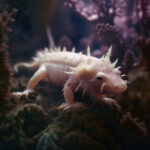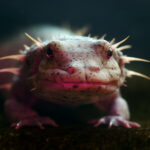Axolotls are fascinating creatures that have gained popularity as pets due to their unique appearance and low maintenance requirements. As amphibians, they have specific dietary needs that must be met to ensure their health and well-being. Providing the best axolotl food is essential for their growth and longevity. In this article, we will explore the various types of food that are suitable for axolotls, including live and frozen options, as well as commercially available pellets. We will also discuss the importance of a balanced diet and provide tips on feeding frequency and portion sizes. By understanding the nutritional needs of axolotls and offering them the best food options, you can help them thrive and enjoy their company for years to come.
Key Takeaways
- The best axolotl food consists of a balanced diet of live or frozen foods such as bloodworms, brine shrimp, and daphnia.
- Commercial axolotl pellets can be used as a supplement but should not be the sole diet.
- It is important to vary the diet to ensure proper nutrition and prevent boredom.
- Feeding should be done in moderation to avoid overfeeding and water pollution.
- Regular monitoring of the axolotl’s health and adjusting the diet accordingly is essential for their well-being.
Understanding the Axolotl: A Unique Pet
A. The Axolotl’s Natural Habitat and Food Sources
The axolotl, also known as the Mexican walking fish, is a fascinating creature that captivates the hearts of many pet enthusiasts. Native to the ancient lakes of Mexico, these amphibians have a unique ability to regenerate their limbs, spinal cord, heart, and other organs. As a result, they have become a popular choice for pet owners looking for an extraordinary companion.
In their natural habitat, axolotls can be found in freshwater lakes and canals, primarily in the Xochimilco region of Mexico City. These lakes are rich in vegetation and provide an abundance of food sources for these aquatic creatures. Axolotls are opportunistic feeders, meaning they will eat almost anything that comes their way.
In the wild, axolotls primarily feed on small fish, insects, worms, and other aquatic invertebrates. They are also known to consume plant matter, such as algae and small aquatic plants. This diverse diet ensures that they receive a balanced mix of proteins, fats, and nutrients necessary for their growth and overall well-being.
B. The Importance of Diet in Axolotl Care
Proper nutrition is crucial for the health and longevity of your axolotl. As a responsible pet owner, it is essential to provide your axolotl with a well-balanced diet that mimics its natural food sources. A varied diet will help ensure that your axolotl receives all the necessary nutrients it needs to thrive.
When it comes to feeding your axolotl, there are several options to consider. One popular choice is commercial axolotl pellets. These pellets are specifically formulated to meet the nutritional needs of axolotls and are readily available in pet stores. They are a convenient option and provide a balanced mix of proteins, fats, and other essential nutrients.
Live food is another excellent choice for axolotls. Small worms, such as blackworms or bloodworms, are a favorite among axolotls. These worms are a great source of protein and can be easily obtained from pet stores or online suppliers. Live food not only provides essential nutrients but also stimulates natural hunting behaviors in axolotls.
In addition to live food and pellets, you can also supplement your axolotl’s diet with other options. Earthworms, for example, are a nutritious and readily available food source. You can either feed them live or freeze-dried to provide variety in your axolotl’s diet. Other options include small fish, such as guppies or minnows, which can be offered as an occasional treat.
It’s important to note that while axolotls have a hearty appetite, overfeeding can lead to obesity and other health issues. As a general rule, feed your axolotl two to three times a week, offering an amount of food that it can consume within five minutes. This will help maintain a healthy weight and prevent digestive problems.
In conclusion, understanding the natural habitat and food sources of axolotls is essential for providing them with a proper diet. By offering a variety of food options, such as pellets, live food, and supplements like earthworms, you can ensure that your axolotl receives a balanced and nutritious diet. Remember to feed in moderation and monitor your axolotl’s weight to promote optimal health and well-being.
The Best Foods for Axolotls
Axolotls are fascinating creatures that require a well-balanced diet to thrive. In this section, we will explore the various food options available for axolotls, including pellets, live prey, and even human food. By understanding their dietary needs, you can ensure that your axolotl remains healthy and happy.
A. Axolotl Food Options: A Comprehensive List
When it comes to feeding axolotls, there are several options to choose from. Here is a comprehensive list of the best foods for axolotls:
-
Pellets: Pellets are a convenient and widely available option for feeding axolotls. These specially formulated pellets contain all the essential nutrients that axolotls need to thrive. Look for high-quality axolotl pellets that are specifically designed for their dietary needs.
-
Live Prey: Axolotls are known to be voracious eaters, and live prey is their favorite food. Feeding them live prey not only provides them with a natural hunting experience but also ensures they receive a varied diet. Some popular live prey options for axolotls include bloodworms, brine shrimp, and daphnia.
-
Frozen Foods: If live prey is not readily available, frozen foods can be a suitable alternative. Frozen bloodworms, brine shrimp, and other small aquatic organisms can be thawed and fed to your axolotl. Just make sure to rinse them thoroughly before feeding to remove any excess salt or preservatives.
-
Earthworms: Earthworms are a nutritious and readily available food source for axolotls. They are rich in protein and other essential nutrients. You can either collect earthworms from your garden or purchase them from a reputable source. Just make sure to chop them into small pieces before feeding.
-
Fish: Small, freshwater fish can be a great addition to your axolotl’s diet. Guppies, minnows, and small goldfish are all suitable options. However, it’s important to note that fish should only be fed occasionally as a treat, as they can be high in fat.
B. The Role of Pellets in an Axolotl’s Diet
Pellets play a crucial role in an axolotl‘s diet. They are a convenient and balanced food option that ensures your axolotl receives all the necessary nutrients. Axolotl pellets are specifically formulated to meet their dietary needs, providing a well-rounded diet that supports their growth and overall health.
When choosing pellets for your axolotl, opt for those that are high in protein and low in fat. Look for pellets that contain a mix of animal and plant-based ingredients to mimic their natural diet. It’s also important to consider the size of the pellets. Axolotls have small mouths, so choose pellets that are small enough for them to consume comfortably.
To feed your axolotl pellets, simply drop a few into their tank and observe their feeding behavior. It’s important not to overfeed them, as this can lead to obesity and other health issues. Monitor their eating habits and adjust the amount of pellets accordingly. Remember to remove any uneaten pellets to maintain water quality.
C. Live Prey: Axolotls’ Favorite Food
Axolotls are natural predators and thrive on a diet that includes live prey. Feeding them live prey not only satisfies their hunting instincts but also provides them with essential nutrients. Live prey options such as bloodworms, brine shrimp, and daphnia are excellent choices for axolotls.
Live prey can be purchased from pet stores or even bred at home. It’s important to ensure that the live prey you feed your axolotl is of high quality and free from any parasites or diseases. You can also consider culturing your own live prey, which can be a cost-effective and sustainable option.
When feeding live prey to your axolotl, it’s important to consider the size of the prey. Axolotls have small mouths, so choose prey that is small enough for them to consume easily. Additionally, avoid overfeeding live prey, as this can lead to digestive issues. Monitor your axolotl’s feeding behavior and adjust the amount of live prey accordingly.
D. The Benefits of Feeding Axolotls Human Food
While it’s important to provide a balanced diet for your axolotl, occasional treats of human food can be beneficial. Feeding them small amounts of human food can help diversify their diet and provide additional nutrients. However, it’s crucial to choose the right types of human food and feed them in moderation.
Some suitable human foods for axolotls include small pieces of cooked lean meat, such as chicken or turkey, and small amounts of vegetables like peas or carrots. It’s important to avoid seasoning or adding any spices to the food, as these can be harmful to axolotls. Additionally, avoid feeding them processed or fatty foods, as these can lead to health issues.
When feeding your axolotl human food, make sure to cut it into small, bite-sized pieces that they can easily consume. Monitor their response to the food and adjust accordingly. Remember that human food should only be given as an occasional treat and should not replace their regular diet of pellets and live prey.
In conclusion, providing a well-balanced diet is essential for the health and well-being of your axolotl. By incorporating a variety of food options such as pellets, live prey, and occasional human food treats, you can ensure that your axolotl receives all the necessary nutrients for a long and happy life. Remember to observe their feeding behavior, adjust portion sizes accordingly, and always prioritize their dietary needs.
What Not to Feed Your Axolotl
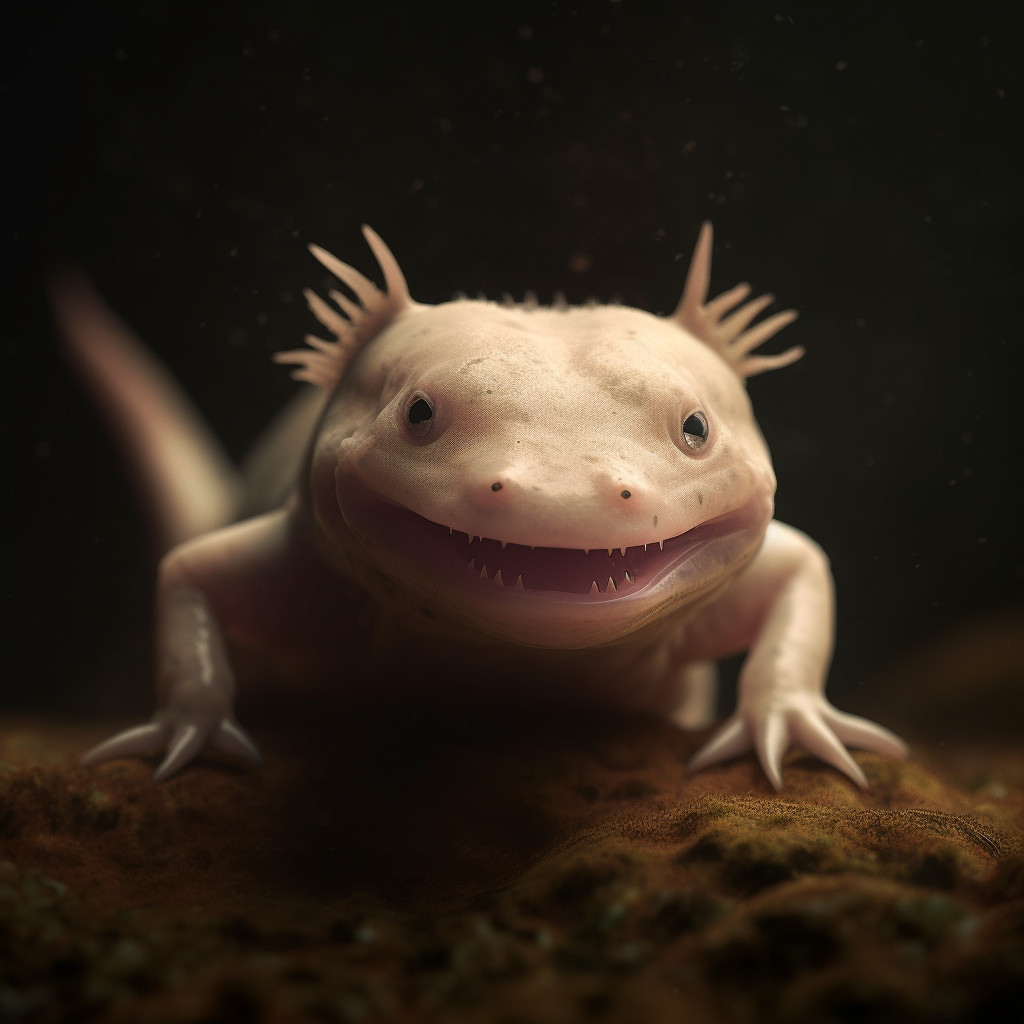
Axolotls are unique creatures with specific dietary needs. While it’s important to know what foods are beneficial for your axolotl, it’s equally crucial to understand what foods should be avoided. Feeding your axolotl the wrong foods can lead to health issues and even be fatal. In this section, we will discuss the foods that are harmful to axolotls and the risks associated with overfeeding and poor diet choices.
A. Foods That Are Harmful to Axolotls
When it comes to feeding your axolotl, there are certain foods that should never be offered. These include:
-
Insects and Bugs: While axolotls are known to eat small insects and bugs in the wild, it’s best to avoid feeding them these creatures as pets. Insects and bugs may carry pesticides, parasites, or diseases that can harm your axolotl.
-
Meat: Axolotls are not designed to digest meat. Feeding them meat can lead to digestive issues and potentially cause blockages in their intestines.
-
Citrus Fruits: Citrus fruits, such as oranges and lemons, are highly acidic and can disrupt the pH balance in your axolotl’s tank. It’s best to avoid feeding them any citrus fruits.
-
Processed Foods: Processed foods, such as chips, crackers, and bread, are high in salt and preservatives. These foods are not suitable for axolotls and can lead to health problems.
-
Plants and Vegetables: While axolotls are primarily carnivorous, they may occasionally nibble on plants and vegetables in their tank. However, it’s important to ensure that the plants and vegetables are not toxic to axolotls. Some common toxic plants include lilies, daffodils, and tulips.
B. The Risks of Overfeeding and Poor Diet Choices
Feeding your axolotl the wrong foods or overfeeding them can have serious consequences. Here are some risks associated with overfeeding and poor diet choices:
-
Obesity: Axolotls are prone to obesity, especially if they are fed a diet high in fatty or unhealthy foods. Obesity can lead to a range of health issues, including heart problems, liver disease, and reduced lifespan.
-
Digestive Issues: Axolotls have delicate digestive systems, and feeding them foods that they cannot properly digest can result in digestive issues like bloating, constipation, or diarrhea.
-
Nutritional Deficiencies: Axolotls require a balanced diet to thrive. Feeding them a poor diet lacking essential nutrients can lead to nutritional deficiencies, which can weaken their immune system and make them more susceptible to diseases.
-
Water Quality Issues: Overfeeding can lead to excess waste in the tank, which can cause water quality issues. Poor water quality can stress your axolotl and compromise their overall health.
To ensure the well-being of your axolotl, it’s essential to provide them with a proper diet and avoid feeding them harmful foods. Stick to a diet that consists of high-quality axolotl pellets, live foods like blackworms or baby brine shrimp, and occasional treats like freeze-dried or frozen bloodworms. Remember to feed them in moderation and maintain a clean and well-maintained tank environment. By doing so, you’ll help your axolotl live a healthy and happy life.
Sourcing Axolotl Food: Where and How
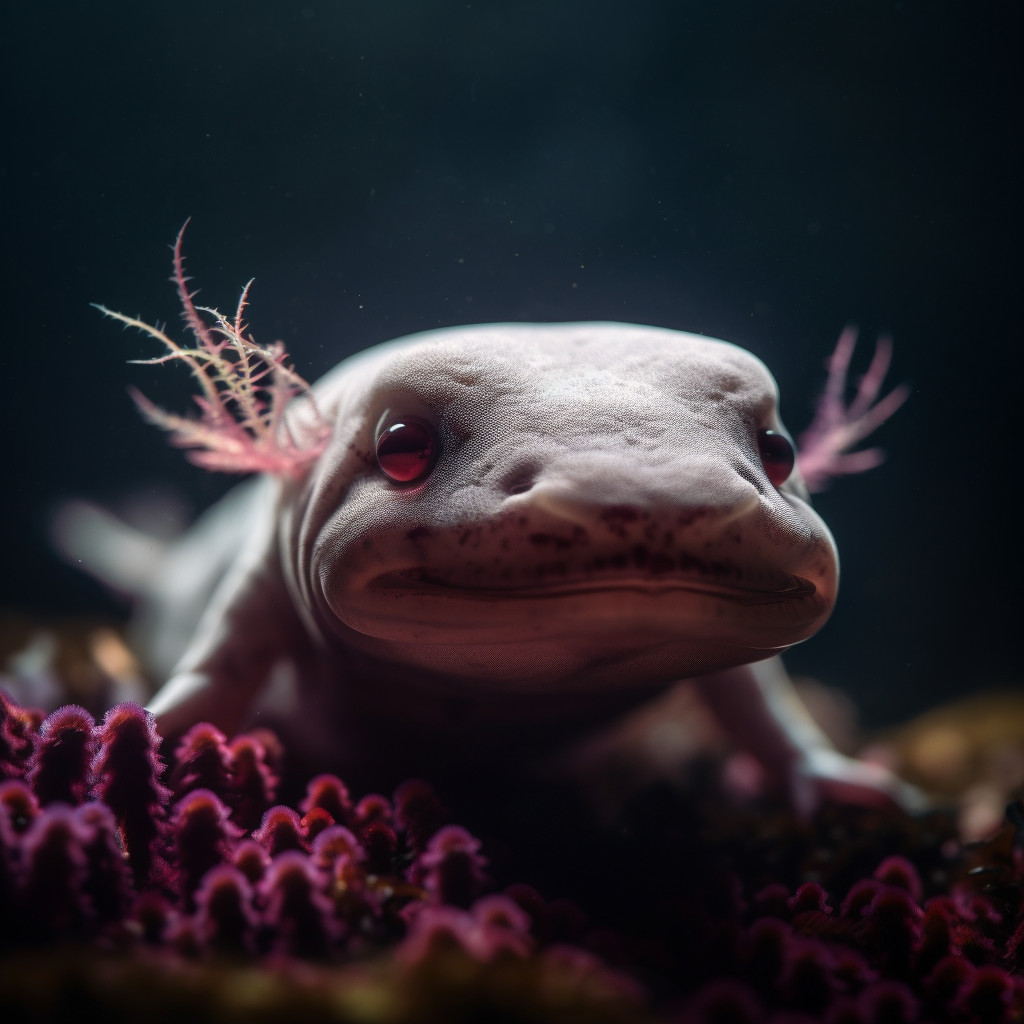
A. Where to Buy Axolotl Food: A Guide
When it comes to sourcing food for your axolotl, there are several options available. It’s important to choose the right type of food that meets the nutritional needs of your aquatic friend. Let’s explore some of the places where you can buy axolotl food.
-
Pet Stores: Local pet stores often carry a variety of axolotl food options. These stores typically stock axolotl pellets, which are specifically formulated to provide the necessary nutrients for your pet. You can find pellets in different sizes to accommodate the varying ages of axolotls.
-
Online Retailers: The internet has made it easier than ever to find and purchase axolotl food. Online retailers offer a wide range of options, including pellets, live food, and supplements. Make sure to read reviews and check the credibility of the seller before making a purchase.
-
Specialty Axolotl Breeders: Some axolotl breeders also sell food for these unique creatures. If you have a local breeder in your area, they may be a great resource for obtaining high-quality axolotl food. Breeders often have firsthand knowledge of the specific dietary needs of axolotls and can provide valuable advice.
-
Aquarium Supply Stores: Stores that specialize in aquarium supplies may carry axolotl food as well. These stores typically have a variety of options, including frozen or freeze-dried foods like worms and brine shrimp. These foods can be a great source of enrichment for your axolotl.
Remember to check the ingredients and nutritional information on the packaging of the food you choose. Look for options that are high in protein and low in fat, as this closely mimics the axolotl’s natural diet.
B. The Cost of Feeding an Axolotl: What to Expect
Feeding an axolotl can be an ongoing expense, so it’s important to consider the cost when planning to bring one into your home. The cost of axolotl food can vary depending on the type and quantity you choose. Here are some factors to consider:
-
Pellets: Axolotl pellets are a popular and convenient option for feeding your pet. The cost of pellets can range from $10 to $30 for a small container, depending on the brand and size. It’s important to note that axolotls have different dietary needs as they grow, so you may need to purchase different sizes of pellets as your axolotl matures.
-
Live Food: Axolotls also enjoy live food, such as worms and brine shrimp. These can be purchased from pet stores or online retailers. The cost of live food can vary depending on the quantity and type of food you choose. For example, a container of live blackworms may cost around $10, while a culture of brine shrimp eggs can range from $5 to $15.
-
Supplements: Some axolotl owners choose to supplement their pet’s diet with additional vitamins and minerals. These supplements can help ensure that your axolotl receives all the necessary nutrients. The cost of supplements can vary depending on the brand and type, but they generally range from $10 to $20.
It’s important to consider the ongoing cost of feeding an axolotl when budgeting for your pet’s care. Remember to factor in the cost of food when planning for the long-term care of your axolotl.
In the next section, we will explore the different types of food that are suitable for axolotls and discuss their nutritional benefits.
Feeding Your Axolotl: Best Practices
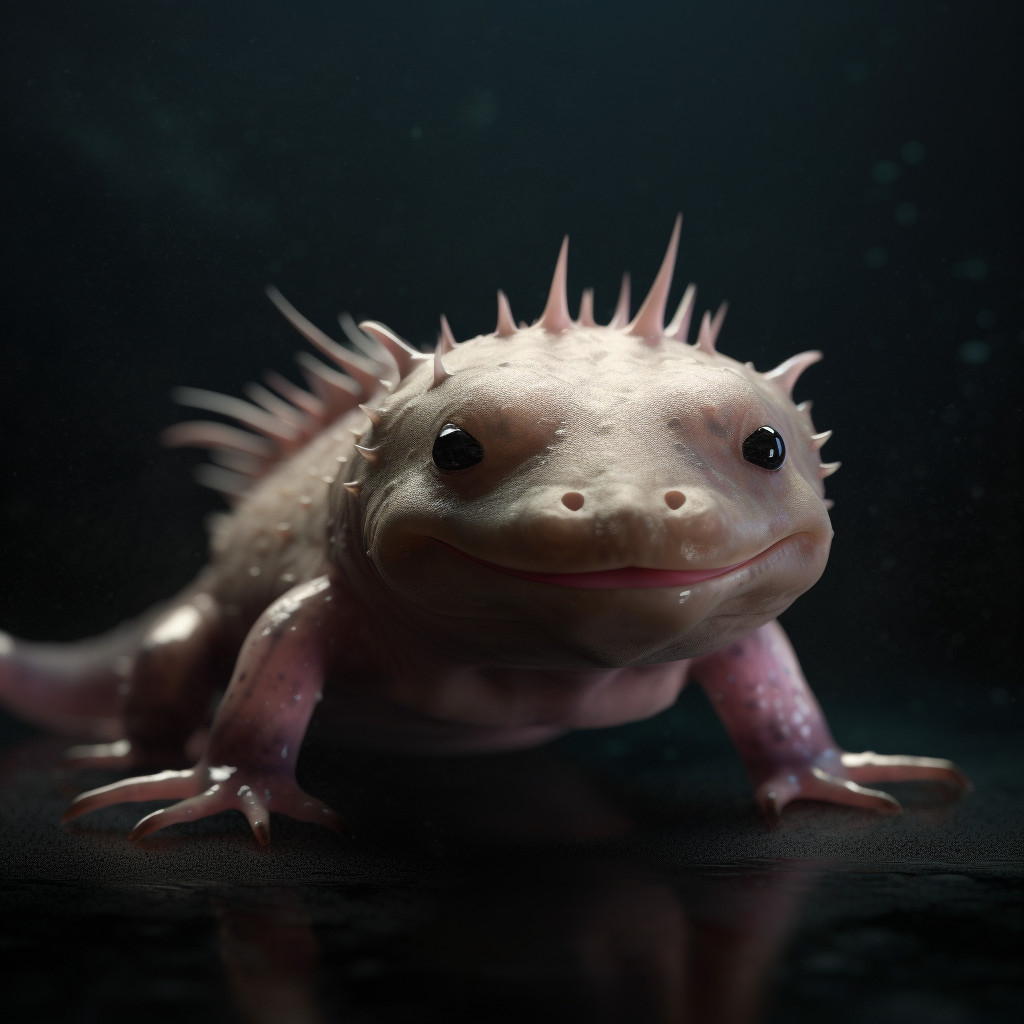
A. How Much and How Often to Feed Your Axolotl
Feeding your axolotl the right amount of food and maintaining a proper feeding schedule is crucial for its health and well-being. Axolotls are opportunistic feeders, which means they will eat whenever food is available. However, overfeeding can lead to obesity and other health issues, while underfeeding can result in malnutrition. Finding the right balance is key.
When it comes to the frequency of feeding, axolotls should be fed once a day. This ensures they receive an adequate amount of nutrients without overloading their digestive system. It’s important to note that axolotls have a slow metabolism, so they don’t require frequent feedings like some other aquatic pets.
B. Tips for Feeding Axolotls: Ensuring a Balanced Diet
To provide a balanced diet for your axolotl, it’s essential to offer a variety of food options. Here are some tips to help you ensure your axolotl gets the nutrients it needs:
-
Pellet Food: High-quality axolotl pellets are a convenient and nutritious option. Look for pellets specifically formulated for axolotls, as they contain the right balance of proteins, fats, and other essential nutrients. Pellets should be the primary food source for your axolotl.
-
Live Food: Axolotls also enjoy live food, which mimics their natural feeding behavior. Baby axolotls, in particular, require live food as they are too small to consume pellets. Blackworms, daphnia, and brine shrimp are excellent sources of live food for axolotls. However, live food should be used as a supplement to pellet food and not as the sole source of nutrition.
-
Prey Items: In the wild, axolotls feed on small prey items like insects, worms, and small fish. You can occasionally offer your axolotl small earthworms, bloodworms, or other suitable prey items. These can be purchased frozen or freeze-dried from pet stores. Remember to cut the prey items into small pieces to ensure they are easy for your axolotl to consume.
-
Avoid Feeding Large Fish: While axolotls may eat small fish in the wild, it’s best to avoid feeding them larger fish as it can lead to choking or other digestive issues. Stick to smaller prey items or commercially available axolotl food.
-
Supplements: If you’re concerned about your axolotl’s nutrition, you can consider adding supplements to their diet. However, it’s important to consult with a veterinarian or an experienced axolotl keeper before adding any supplements to ensure you’re providing the right balance of nutrients.
By offering a combination of pellet food, live food, and occasional prey items, you can provide a well-rounded and nutritious diet for your axolotl. Remember to monitor your axolotl’s weight and adjust the feeding amount accordingly to maintain a healthy balance. Conclusion
In conclusion, choosing the best food for your axolotl is crucial for its overall health and well-being. Axolotls are carnivorous creatures that primarily feed on live or frozen foods such as bloodworms, brine shrimp, and blackworms. These foods provide the necessary nutrients and proteins that axolotls need to thrive. Additionally, it is important to supplement their diet with high-quality pellets or gel foods that are specifically formulated for axolotls. These foods ensure that your axolotl receives a balanced diet and all the essential vitamins and minerals it needs. Remember to feed your axolotl small, frequent meals to prevent overfeeding and maintain water quality. By providing your axolotl with the best food options, you can help it live a long and healthy life.
Frequently Asked Questions
Q1: What is the best food to feed an axolotl?
A1: The best food for axolotls includes a mix of live food like earthworms, axolotl pellets, and bloodworms. These foods provide a balanced and nutritious diet for axolotls.
Q2: What foods are bad for axolotls?
A2: Foods that are bad for axolotls include raw meat, fish, and salty foods. These can harm their digestive system and overall health.
Q3: Where can I get axolotl food?
A3: Axolotl food can be purchased from pet stores, online retailers, or specialty reptile and amphibian stores. Live food like earthworms can also be found in bait shops or garden centers.
Q4: What human food can axolotls eat?
A4: Axolotls should not be fed human food. Their diet should consist of axolotl-specific pellets, live food like worms, and occasional food supplements designed for axolotls.
Q5: How much does axolotl food cost?
A5: The cost of axolotl food varies depending on the type and brand. On average, a pack of axolotl pellets can cost around $10-$20, while live food like earthworms can cost around $5-$10 per pack.
Q6: How do I feed my axolotl?
A6: Axolotls can be fed by placing the food directly in their tank using feeding tongs or a turkey baster. They should be fed 2-3 times a week, depending on their size and age.
Q7: What is an axolotl’s favorite food?
A7: Axolotls particularly enjoy live food like earthworms and bloodworms. However, a balanced diet should also include axolotl pellets to ensure they receive all necessary nutrients.
Q8: What should I feed my axolotl?
A8: Axolotls should be fed a balanced diet of axolotl-specific pellets, live food like earthworms and bloodworms, and occasional food supplements designed for axolotls.
Q9: Where do axolotls find their food in the wild?
A9: In the wild, axolotls find their food in the muddy bottoms of lakes and canals. They eat a variety of small organisms like worms, insects, small fish, and crustaceans.
Q10: What are some good axolotl food options?
A10: Good axolotl food options include axolotl-specific pellets, live food like earthworms and bloodworms, and occasional food supplements. These provide a balanced and nutritious diet for axolotls.

